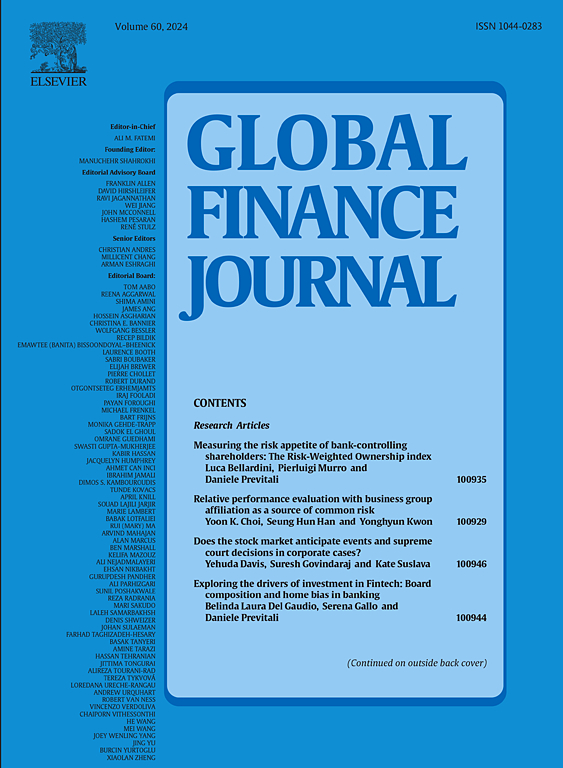Analytical fixed income pricing in discrete time: A new family of models
IF 5.5
2区 经济学
Q1 BUSINESS, FINANCE
引用次数: 0
Abstract
This paper proposes a large class of discrete-time models for interest rates, with flexible distributions on innovations and multiple factors, filling two key gaps in the literature. First, the models are “affine”, and as a result, closed-form pricing for bonds and analytical representations for more general fixed-income products can be obtained. This is reminiscent of the continuous-time models studied in Duffie et al. (2003) and the discrete-time GARCH models for assets introduced by Heston and Nandi (2000). Secondly, the models allow for control of the lower bound of the interest rate, permitting bounded negative rates. This second contribution is absent even from the popular continuous-time literature. As an application, we study the properties and interpretation of our main proposal, a Gaussian-based model with a non-central Chi-square distribution. The model is estimated via maximum likelihood on daily time series of US interest rates for various maturities and monthly interest rates from the G7 countries. The empirical analysis confirms the superiority of our model in terms of likelihood, AIC, and BIC values compared to two benchmarks, an autoregressive model as a discrete-time version of the Vasicek model, and the popular CIR model. Our model also provides additional flexibility in accommodating the yield curve, with massive potential for richer structures while maintaining the key benefits.
离散时间下的分析性固定收益定价:一类新模型
本文提出了一大类利率离散时间模型,具有灵活的创新和多因素分布,填补了文献中的两个关键空白。首先,模型是“仿射”的,因此可以得到债券的封闭式定价和更一般的固定收益产品的分析表示。这让人想起Duffie等人(2003)研究的连续时间模型,以及Heston和Nandi(2000)引入的资产离散时间GARCH模型。其次,这些模型允许控制利率的下限,从而允许有界的负利率。这第二个贡献甚至在流行的连续时间文学中也没有。作为一个应用,我们研究了我们的主要建议的性质和解释,一个非中心卡方分布的基于高斯的模型。该模型是通过对美国不同期限利率的每日时间序列和G7国家的月度利率的最大似然来估计的。实证分析证实了我们的模型在似然、AIC和BIC值方面优于两个基准,一个是作为Vasicek模型的离散时间版本的自回归模型,另一个是流行的CIR模型。我们的模型还在适应收益率曲线方面提供了额外的灵活性,在保持关键优势的同时,具有更丰富结构的巨大潜力。
本文章由计算机程序翻译,如有差异,请以英文原文为准。
求助全文
约1分钟内获得全文
求助全文
来源期刊

Global Finance Journal
BUSINESS, FINANCE-
CiteScore
7.30
自引率
13.50%
发文量
106
审稿时长
53 days
期刊介绍:
Global Finance Journal provides a forum for the exchange of ideas and techniques among academicians and practitioners and, thereby, advances applied research in global financial management. Global Finance Journal publishes original, creative, scholarly research that integrates theory and practice and addresses a readership in both business and academia. Articles reflecting pragmatic research are sought in areas such as financial management, investment, banking and financial services, accounting, and taxation. Global Finance Journal welcomes contributions from scholars in both the business and academic community and encourages collaborative research from this broad base worldwide.
 求助内容:
求助内容: 应助结果提醒方式:
应助结果提醒方式:


